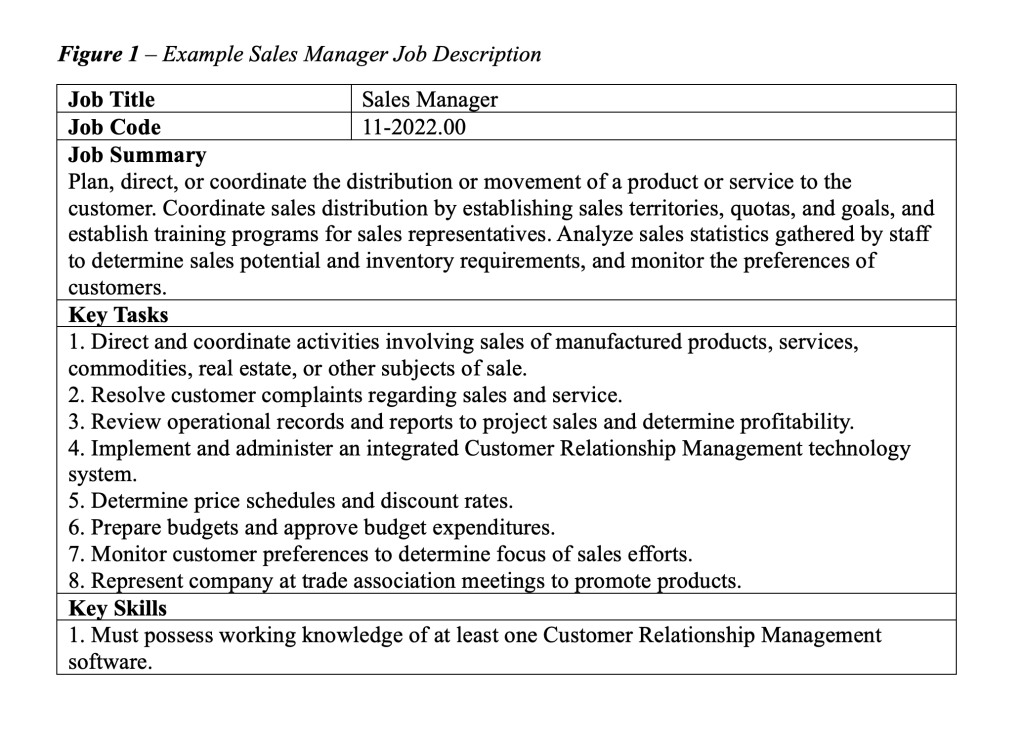A Crash Course in Hiring Your Startup's First Employees

It is always exciting when a startup grows big enough to hire beyond the founding team. It can also be frightening for the founders, because being an employer means new responsibilities: writing job descriptions; finding and onboarding new people into the unique little world of your startup; training them to take over tasks you might have fallen in love with; figuring out how much to pay them when money is tight as it is – and making payroll every time.
Most entrepreneurs have little to no formal training or experience in human resource management. Entrepreneurs often delegate HR to someone else, but the delegate is all-too-often an employee who also has no background in HR either (and, of course, this is not an option when hiring your very first employee). This can put startups on the back foot, both strategically and legally. Great HR management improves the capabilities, motivation, and retention of employees, while bad HR can do the opposite and increase legal risk.
For entrepreneurs just getting started with HR, it helps to have some reputable people-management tools at your disposal. Fortunately, there is an authoritative, free tool that entrepreneurs can use to help build human resource functions. The Occupational Information Network, better known as O*Net, can help entrepreneurs make good decisions as they hire their first employees. The purpose of this article is to provide a detailed illustration of how O*Net can help you set a strong foundation when staffing your startup.
THE CORE HR DECISIONS FOUNDERS HAVE TO MAKE
HR systems, like Rome, are not built in a day, so let us start with four steps that entrepreneurs hiring their first employee(s) will have to take immediately in order to get people in the door:
1. Define the jobs that need done.
2. Decide how much people will be paid to do those jobs.
3. Come up with a plan to staff those jobs – recruit candidates and select the best ones.
4. Have clear performance expectations ready to share with new hires.
It is absolutely critical that all four of these things are done well. You need appropriate pay ranges and a staffing plan to get people interested in working for you, and performance expectations to keep employees on track. Lawsuits are a distinct possibility if you take a haphazard approach to staffing (do you have a trusted attorney who can help with the legal side of HR? If not, you should). And if jobs are not well defined, the rest is a lost cause, because everything else flows from the job description.
HOW O*NET CAN HELP BUILD HR FROM SCRATCH
Fortunately, O*Net can help entrepreneurs do each of these steps well. O*Net is a database of occupational descriptors, meaning it lays out the key tasks and activities typically found in over 1,000 different kinds of jobs. O*Net also maps out the KSAOs (knowledge, skills, abilities, and other characteristics like traits) workers need to perform those tasks and activities well, and provides data on what workers are typically paid in similar roles nationally and locally. O*Net is maintained by industrial-organizational psychologists (professionals with graduate degrees in the science of HR) working for the U.S. Department of Labor, so it provides trustworthy data. Perhaps the best thing about O*Net is that it is completely free to use and very user-friendly. You can find it at onetonline.org, and can search for any occupation using the “Occupation Keyword Search” feature.
Below, I lay out the four steps you need to take in early-stage HR, and how O*Net can help you get started. I will encourage you to visit O*Net throughout to build familiarity with how it works.
Step 1: Define and Describe the Job
The first thing to do is define the job you need to hire for. By a job, I mean the collection of related tasks and activities that the person you hire will be doing. If the related part of that statement makes you think, “Well, we need someone to do a bit of everything,” stop right there. You should not expect a non-owning employee to take an undefined role – what you need is another cofounder.
Once you know the specific job you need someone to fill, you will need a description of that job to let people know what you are looking for. Job descriptions have three essential components, and can include other information if needed:
1. Identifiers (the job title and a numeric code representing the job)
2. A Job Summary (a brief, written statement of the objectives of the job)
3. Duties and Tasks (what is done on the job, typically presented as a list in order of importance)
Some discretionary information you might include if necessary: the level of supervision, key knowledge, skills, or credentials you are looking for; and context that should be disclosed to the worker, like hazardous conditions and second-, third-, or rotating shift work.
O*Net supplies this information for common occupations, which you can use to build your job description. As an example, say you need a sales manager to help you bring your product to market. You can type “Sales Manager” into the Occupation Keyword Search, and voila, an occupation called “Sales Managers” comes up. The first thing you will see once you have selected an occupation is the occupation name, a numeric code (this is a Standard Occupation Classification or SOC code), a brief occupation summary, and a “sample of reported job titles” that identifies common job titles falling under this occupation. This contains all the information you need for your identifiers (choose the job title that makes the most sense to you and record the SOC code) and job summary (copy the brief occupation summary and adapt it as needed). You are already halfway there!
Immediately below this, you will see the “Contents” of the job. The first items there are the “tasks” associated with the job, a list of between 5 and 20 tasks and duties often done in a job like this. Some will not apply to you – using the sales manager example, startup sales managers will not oversee regional managers or direct foreign sales that do not yet exist – but you can take or adapt any job duties that do fit what you need (Tip: if you need the person you hire to implement a system as well as manage it, you should probably add “implement” to the duty/task so applicants knows they have to start from scratch). If there are other tasks and duties you know need to be done but are not part of the O*Net task list, you can add them at your discretion, but usually many will be covered by O*Net – if you are not finding this to be the case, you might consider redoing the keyword search to see if you can find a better match.
Finally, scroll down through the rest of the content section to see if there are any Knowledge, Skills, Technology Skills, Training & Credentials, or Education requirements that seem necessary for your job. For example, you might require that your sales manager have working knowledge of Customer Relationship Management software so they can implement a formal, integrated system for dealing with clients. You might also require them to have a degree or other credential, but only if this is truly necessary.
Congratulations, you have just created a job description! (see Figure 1 for an example) You can alter this job description as needed at a later date, but for now, you are ready to move on to Step 2, armed with the knowledge of what is job-related and what is not.

Step 2: Compensating New Employees
Before we can start recruiting, you will have to determine how much to pay new hires. Most companies today think about pay in market-based terms; the median amount that a local worker is paid to perform an occupation becomes the benchmark and default amount offered. Of course, prospective employers can strategically “lead” the market (i.e., offer pay higher than the median) to attract top-notch candidates or “lag” the market (lower than the median) to save labor costs. The latter is probably a necessary evil given how cash-strapped most startups are -- hence the common reliance on equity and variable pay schemes to make up the difference -- but you still need to know the benchmark to lag pay strategically.
If we return to the “Contents” section of the Sales Manager profile on O*Net, we can scroll down to wage and employment trends, where we can see the median wage for Sales Managers (as of 2022, this is $62.79 hourly, $130,600 annually). This is the national median, but you can also search by state or ZIP code to see more detailed information about the distribution of wages in your local market – use the most local information available unless the position is remote. Notably, you should list pay as a concise range in job postings, so that you can pay candidates commensurate with their KSAOs. The actual amount you will pay your eventual hire will be negotiated after you offer them the job, so plan to be a bit flexible while sticking near the benchmark.
Step 3: Recruit and Select Applicants
Now that you know the job you are hiring for and roughly how much you will pay, the next step is to decide how you will staff the position. You must now generate a pool of applicants and select the ones you wish to hire. This is where strategic and legal imperatives intersect a great deal. Under the Uniform Guidelines on Employee Selection Procedures (the set of rules the Federal government uses to determine discrimination; Uniform Guidelines for short), you should be selecting employees based on job-related criteria (i.e., the ability of workers to do what you put in the job description; strategically, you would want to do this anyway!). Fortunately, you already established your job-related criteria when you created your job description in Step 1.
Your job description from Step 1 can be turned into a job posting by adding your pay range from Step 2 and a bit of your company’s branding to entice applicants. Where you advertise that posting depends on where candidates look and the norms of hiring in their occupation. Put simply, you will need to “go where the fish are,” and that may mean a web-based job posting, recruiting from professional societies, attending college and community college job fairs, collaborating with public workforce assistance agencies, or something else entirely. Referrals from trusted members of your network are a powerful tool, but should not be relied on for everything. How best to reach your target audience is something you should research carefully.
Once you have a pool of applicants, you should use the tasks and duties identified in Step 1 to guide your choice of who to hire. There are lots of useful methods for screening applicants, but I will focus on two that are simple, effective, and inexpensive to implement – work samples and structured interviews. Work samples ask applicants to provide direct evidence of ability to perform tasks from the job description via demonstration. In the case of the sales manager, you might ask them to give a sales pitch they might make to a client. Structured interviews are also commonplace, and asking every applicant the same questions related to key tasks and abilities is a must. In the same “Contents” section of O*Net where we found the typical tasks involved in a job, note the associated Knowledge, Skills, Abilities, and Work Styles (traits). These are all job-related characteristics that you can assess through work samples and interviews, though depending on how sophisticated the needed KSAOs are, you ask subject matter expert to help you understand how to assess them. Use consistent evaluation standards across all applicants.
A quick legal aside – if a screening method you employ shows “adverse impact,” i.e., disadvantages a protected group like women or racial minorities, the Uniform Guidelines say you cannot use it unless you can clearly demonstrate that it is job related. Any method with an unclear link to task performance is a legal liability. An example of a method with adverse impact that is probably legal is a strength test for firefighters; physical strength is necessary for firefighting, and thus it is an acceptable screener even if it disadvantages the median woman. A strength test would almost certainly not be legal if you are hiring a sales manager, though, unless your sales manager has some very unusual duties.
In sum, your staffing process might follow a sequence like this:
1. Post your job advertisement in relevant places.
2. Narrow your pool of applicants through screening on job-related criteria.
3. Make an offer to the best candidate, negotiate their salary and, once an offer is taken by an acceptable candidate, welcome your new hire!
Step 4: Talent Management
Hiring great employees is key – but it is only the beginning of the story. You need to communicate ongoing performance expectations to employees, and we need a system to identify good performers (candidates for rewards and promotions) and poor performers (candidates for further training or, if necessary, separation). Expectations should be in place when employees arrive, so they know what to expect. Performance evaluation systems, like selection practices, are potential landmines because evaluations that are not job-related are legally dubious and not particularly useful. So, we are once again going to rely on the job description we developed in Step 1.
Tasks and duties form the basis for performance evaluation. Whoever supervises the employee will become responsible for rating the employee’s performance on each of their tasks and duties. It is important that rating standards are consistently applied – performance evaluation is famously fraught with politics, so the more objective you can make these ratings, the better. Performance evaluation is tricky, but it is important to remember that ultimately you want to accomplish two things: 1) hold people accountable for reaching a minimum acceptable level of performance, and 2) catalyzing a continuous conversation on your workers’ training and development.
CONCLUSION
Hiring early employees in startups requires a certain amount of preparation and diligence. However, this preparation should not be overwhelming. In O*Net, entrepreneurs have a great tool for creating job descriptions, discovering market compensation standards, and developing job postings, selection methods, and performance standards. While most entrepreneurs may not be experts on HR, O*Net can help you get some foundational elements right the first time, setting the stage for venture growth.



